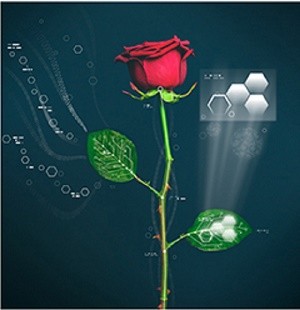For the first time ever, scientists have created an electronic plant using nature's vascular systems combined with modern electronic circuits.
Researchers from the Linköping University led by Magnus Berggren from the Strategic Research Center for Organic Bioelectronics and Organic Electronics, used a living plant and its vascular system to create an electronic circuitry within.The Laboratory of Organic Electronics team believe that this breakthrough research could be the precursor to organic electronics.
To create the same internal functions of a plant, which include hormonal and ionic signals movement, the Swedish scientists used electronic signals to link with the plant's slow chemical processes that merged both of them together, via the plant's pathways and to control its growth regulators. Scientists believe that the plant's fuel cells that rely on photosynthesis, are key to a plant's internal functions, establishing a connection for electronic circuitry.
According to co-author of the study, Ove Nilsson from the Umeå Plant Science Center, prior to this, there were no good enough tools to measure the concentration of various molecules inside living plants. Now, the team has the ability to influence the various substances and their concentrations in the plant to regulate its growth and development.
There were prior attempts to embed electronics into trees in the 1990s however lack of funding led the projects to be put on hold. Now, the team are already embedding different conductive polymers inside a plant's system using the stem of a rose. This polymer, known as the PEDOT-S is apparently the only successful polymer that rooted itself within the rose and functioning as conducting wires inside the xylem channels of a plant. This successful merger could also retain water and sustain nutrient transportation.
With the combination of biological and electronic processes, this created an electrochemical transistor, converting ionic signals into electronic output. The team removed the air from the leaf of the rose and injected it with the same polymer using a vacuum infiltration process. After applying an electronic voltage, the polymers connected with the leaf's ions and in turn, causing it to change its color.
The team believes that this new study can lead to the future of new and sustainable environmental energy applications with the use of organic electronics. These new findings are published in the journal, Science Advances.



























